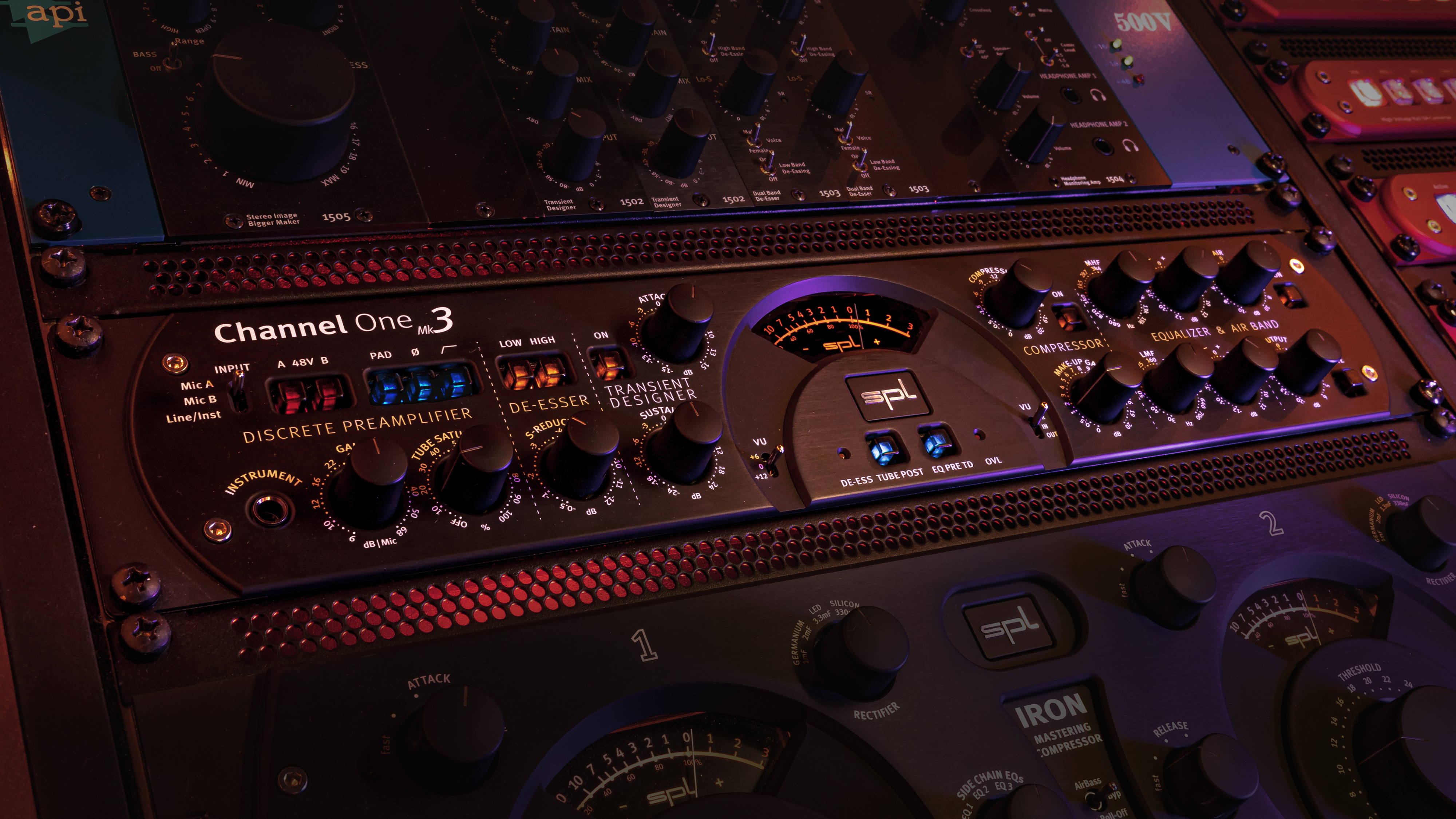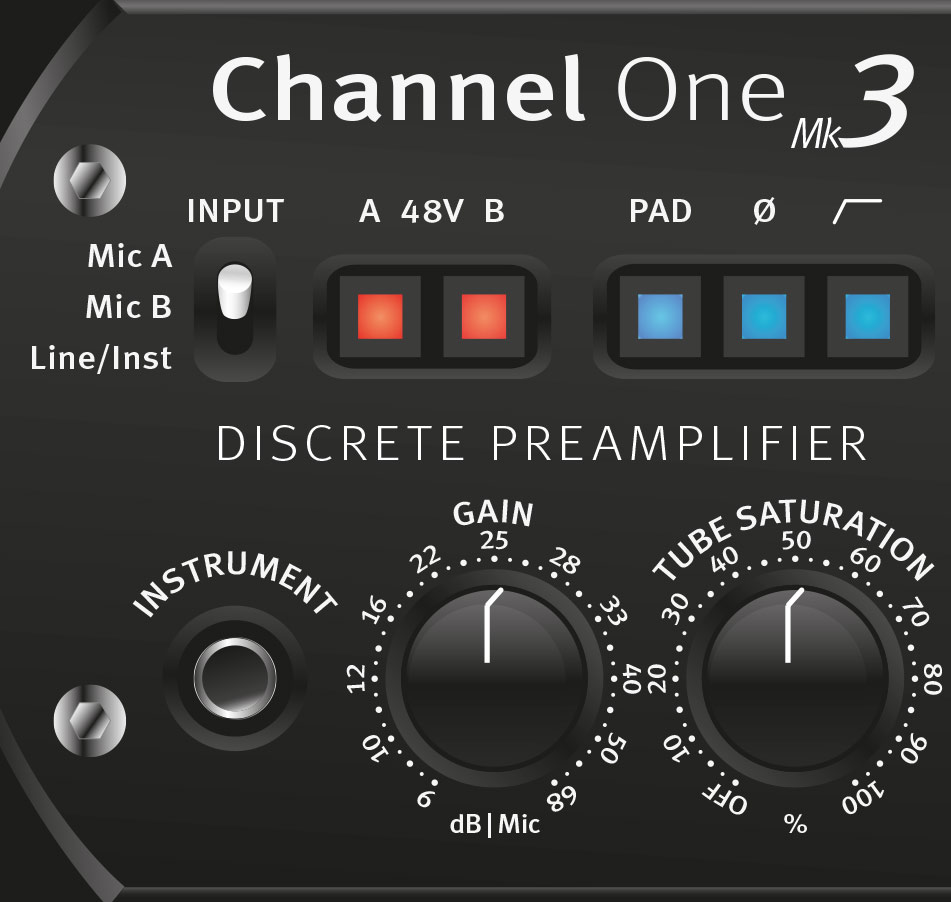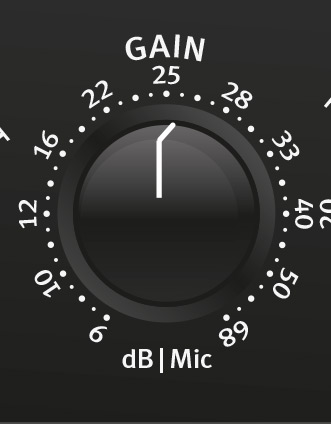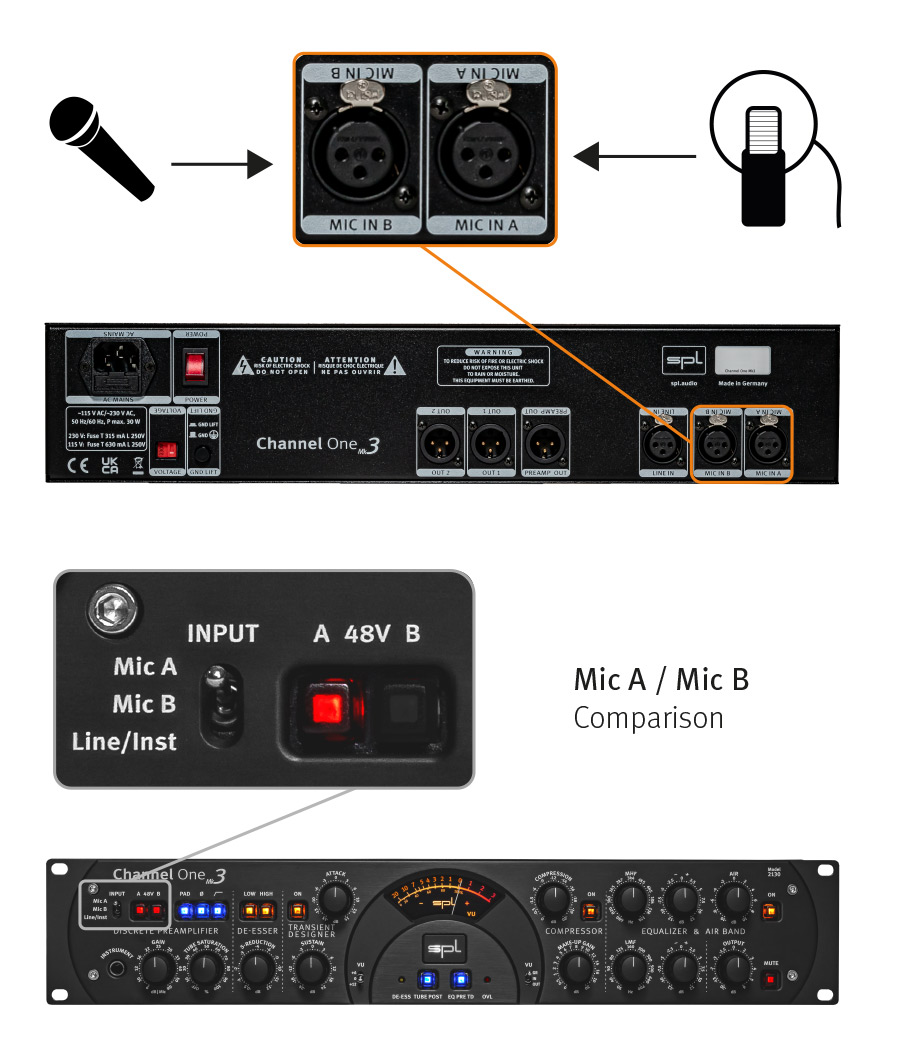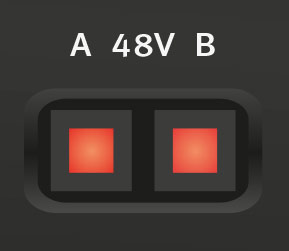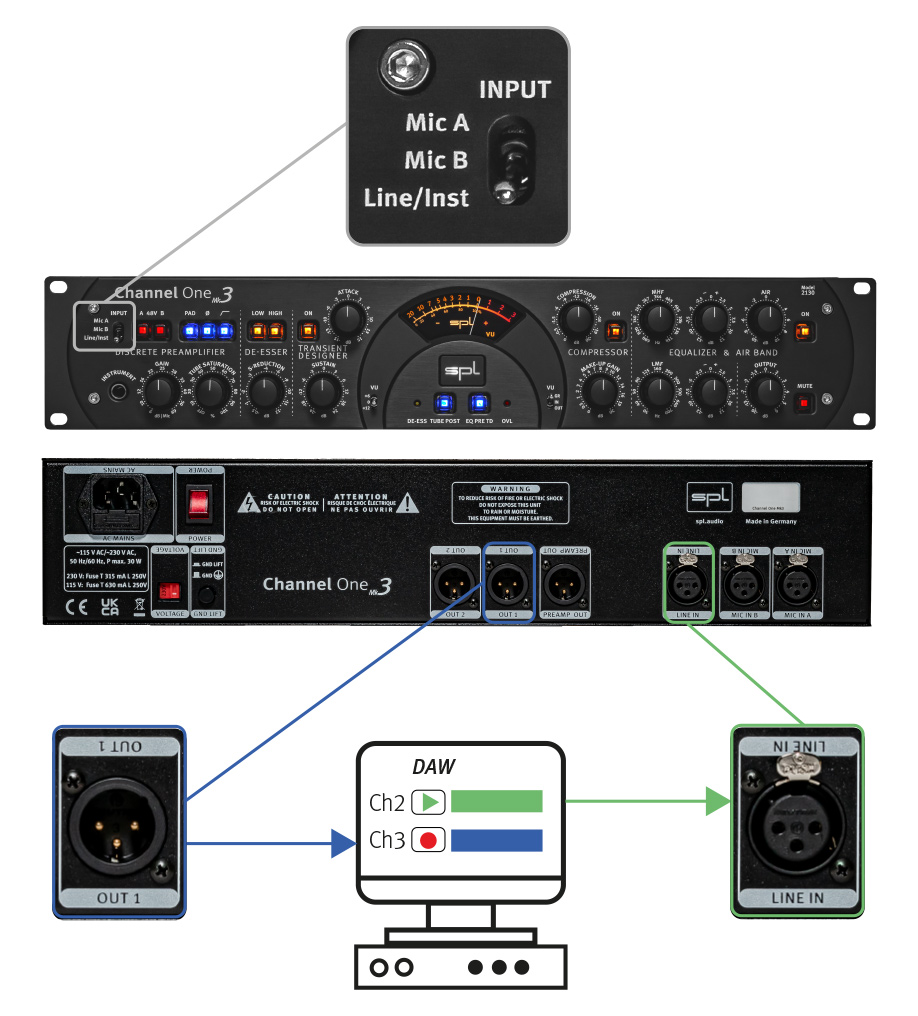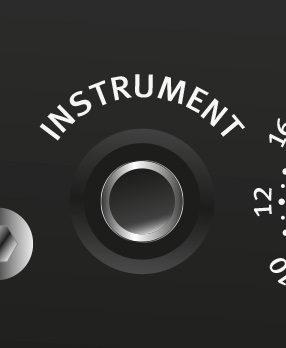For over 20 years, Channel One has been a synonym for a high-quality and extremely musical recording and mixing channel strip.
In the newest Mk3 version, this classic has been thoroughly revised and, in addition to a higher internal audio voltage (now +/-18 V) for even better, more detailed sound, a further improved preamplifier section, an integrated Transient Designer, a Tube Saturation stage and a Mic A/B comparison option for two microphones and other great features that raise the modern recording and mixing studio to a new level of quality. With de-esser, compressor and equalizer, all the important tools of a real channel strip are still on board. Whether it’s a microphone, line, or instrument signal, the Channel One Mk3 makes any source sound like a professionally recorded signal.
The new design of the SPL Studio Series perfectly highlights the sonic qualities of this 3rd generation Channel One.








